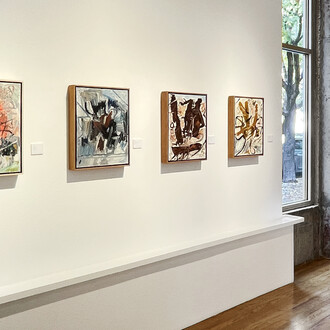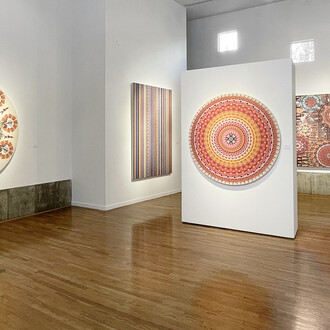Bitfactory Gallery owner and curator Bill Thomason invited five artists, Kathy Beekman, Bruno D’Anna, Mara Manning, Jeremy Patlen and Topher Straus to exhibit landscape work that presents their distinct style. Mediums include oil paintings, photography, pastels and digital art featuring original takes on natural and urban terrain. The Open Spaces show begins with an artist reception on March 20 from 5 to 9 pm and runs through April 9, 2020.
Kathy Beekman uses no tools in her soft pastel landscape paintings, other than her fingers. Self-taught in this medium she works quite deliberately, while letting her unconscious take control and guide her creations. It steers her compositions, color choices and their placement, and tells her when a painting is finished. For Beekman, creating comes intuitively rather than intellectually. Her work is inspired by the Midwest, where she grew up and her current surroundings in Colorado.
Italian artist Bruno D'Anna creates his representational oil paintings with a palette knife, using bright, vivid colors, making bold choices in perspective, focus and most importantly, light. With his seemingly effortless ability to capture its elusive quality and how natural daylight fills in a landscape or the lights of a city falls on a cityscape, he can, in just a few strokes can transform a painting to represent a different mood.
Michigan artist Mara Manning works in cold wax and oil and a variety of mixed media including pigment sticks and oil pastels, dye stain, artgraph and more. Each painting has its own unique story whether it is one of humor or tension, real or imagined. She sometimes thinks of the paint itself as the actual subject matter causing the use of color to evolve from the painting process. While the objects often have clean-cut boundaries, they are not recognizable for the role they are playing.
The inspiration for Topher Straus’ art comes from decades of living in, and exploring Colorado and the Rocky Mountains, admiring tree-flooded valleys and silhouetted mountain peak sunsets. His process includes modern technology and methods that result in a well-known landscape engulfed in contoured lines that superimpose the autogenous beauty of the original photograph. He takes recognizable, natural landscapes and converts them into a modern array of sharp lines—blending and contorting them up the slope of a mountain or shaping the soft, blurred lines of a waterfall. His zest for transcending established iconography makes for a unique combination of traditional vistas and modern style.
For New York artist Jeremy Patlen, landscape photography is a personal and meditative practice. In places such as the open prairie or above the tree line, the light changes nearly constantly, turning the landscape into an abstract. His practice is to become calm and look deeply to find the essence of a place, then try to capture it with my camera at just the right moment. Whether traveling, documenting weddings or photographing people, he constantly seeks out the beauty that gives a place or person its intrinsic character.
















